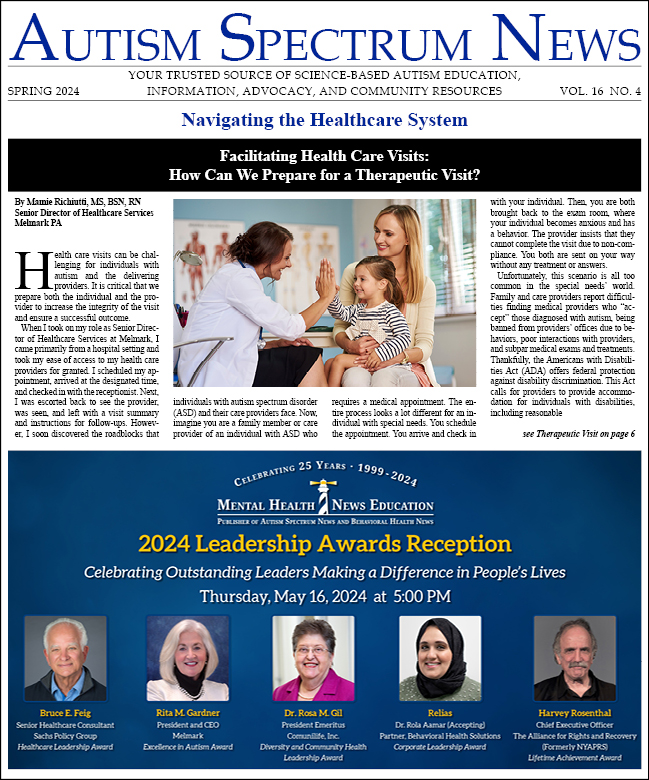-
Supporting Children with Intellectual Disabilities/Autism in a Residential Treatment Facility
It is important for children with autism and intellectual disabilities to remain living at home, or in the least restrictive environment with appropriate supports, whenever possible. However, at times, a child’s challenging behaviors can pose such a significant threat to themselves or others, it...
-
An Interdisciplinary Model for Supporting Children with Autism and Their Families
An autistic child’s family is structured no different than that of neurotypical children. Families generally include parents and siblings with their own perspectives and issues. In the wake of substantial empirical support for the effectiveness of applied behavior analysis (ABA) interventions for...
-
The Importance of Friendship for Youth with Autism: Strategies for Finding Friends
Childhood loneliness has life-long consequences. Children who do not have friends are at higher risk for anxiety and depression as they get older which can lead to life-long mental health and medical problems (Hawkley, L. C., & Cacioppo, J. T., 2010). Even having just one friend can be a...
-
Preparing Children with ASD for New Siblings
Introducing a new baby is a wonderful, joyous time for a family. When preparing children with Autism Spectrum Disorder (ASD) for a new sibling, your approach may need to begin long before the new baby arrives. According to the Diagnostic and Statistical Manual of Mental Disorders (DSM-5),...
-
Scaffolding Communications Skills for Elementary Students with Autism
When I decided to teach elementary Autistic children, my first task was to query many teachers as to their students’ learning styles. One size doesn’t fit all. Some students with autism learn visually, others need to listen intently, some draw, and others need to write things out. In most...
-
Video Games and Kids – How Much is Too Much?
Although video games have been a part of American culture for over 40 years, their influence in the lives of youth has grown exponentially in recent years, particularly for those on the Autism Spectrum. The Kaiser Family Survey found that, between 2000 and 2010, the average amount of time that 8-18...
-
Early Intervention Resources for Families with Young Children
Research shows that early intervention (birth - age three) improves outcomes for children with autism and other special needs. Two good resources for families are: NECTAC (National Early Childhood Technical Assistance Center) with an overview of early intervention, data, and contacts...
-
Changing the Mindset of Autistic Children and Adolescents
A major focus of our collaboration has been to elaborate upon the concepts of both mindsets and resilience (Brooks and Goldstein, 2001, 2004, 2007, 2012; Goldstein and Brooks, 2005, 2007). We propose that all people possess a set of assumptions about themselves and others that influence their...
-
To Be or Not to Be (Autistic) – The New Generation of Kids Who Are Almost Autistic, But Not Quite
Parents of children diagnosed on the high functioning side of the Spectrum confront the quandary of whether concealing their kids’ diagnoses in avoidance of discrimination, or disclosing them to educate others on the many layers of the Autism Spectrum Disorders (ASDs). There is, however, a...
-
A Child’s Right to Positive Behavioral Interventions
Autism Spectrum Disorders (ASDs) are complex neurobiological disorders of early brain development. The deficits associated with ASDs may affect many aspects of individuals’ lives including socialization, such as developing relationships, communication, and activities of daily living. Government...





